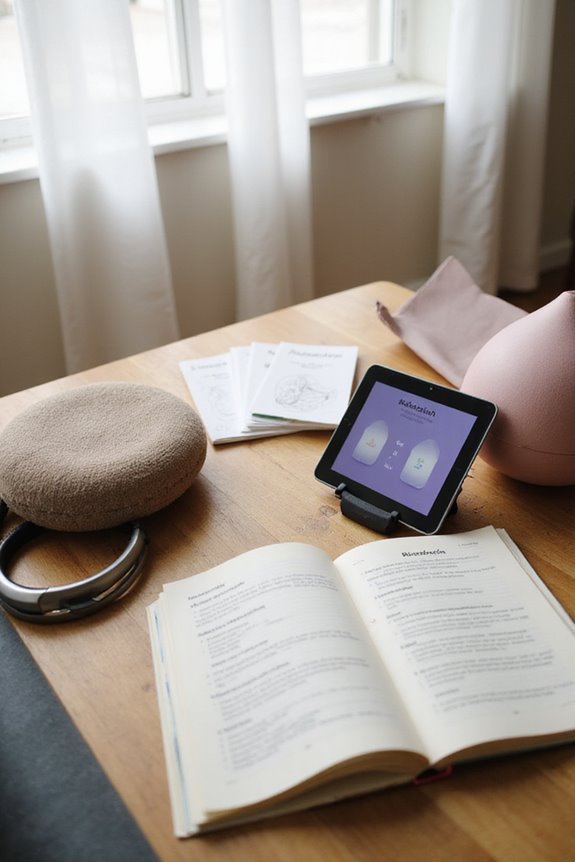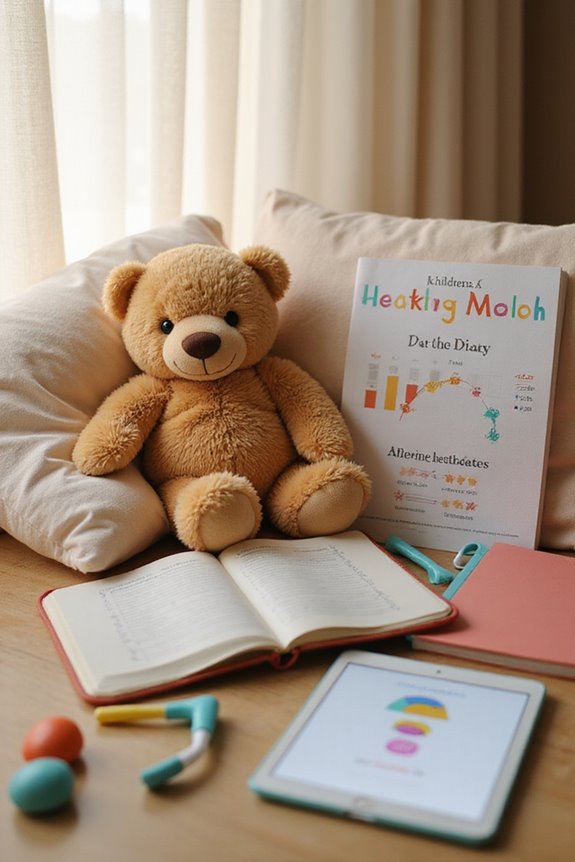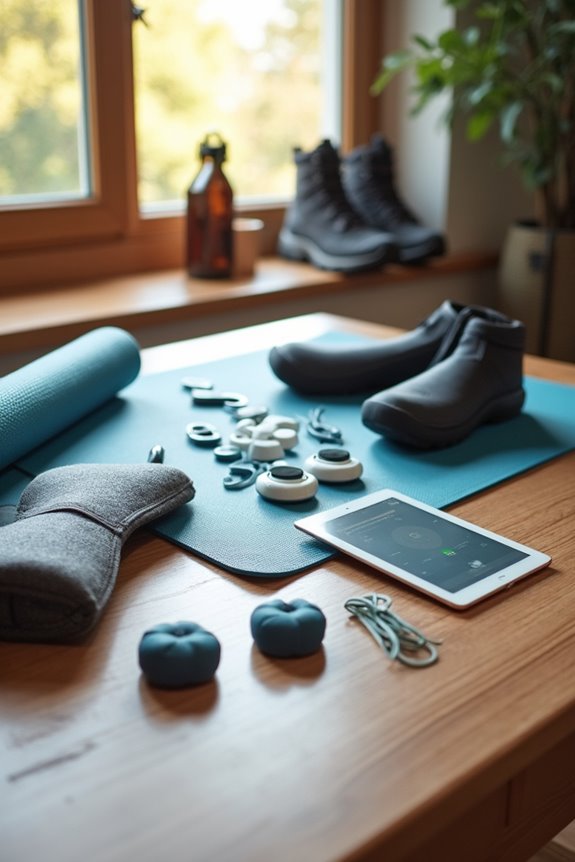Middle-aged adults can utilize various effective pain management approaches.
- Pharmacological Approaches: Analgesics (e.g., acetaminophen), NSAIDs for musculoskeletal pain, and opioids for severe cases.
- Non-Pharmacological Treatments: Heat therapy, cold therapy, and physical therapy enhance mobility.
- Behavioral Strategies: Cognitive Behavioral Therapy (CBT) and mindfulness interventions address psychological factors.
- Complementary Therapies: Acupuncture and massage therapy provide additional relief.
- Lifestyle Modifications: Exercise, nutrition, and weight management greatly impact pain levels.
Further details on these strategies can help refine pain management plans.
Key Takeaways
- Combination Therapy: Using acetaminophen and NSAIDs can effectively manage pain while minimizing adverse effects for middle-aged adults.
- Physical Therapy: Structured exercise programs improve mobility and reduce pain, making them beneficial for managing chronic conditions in this age group.
- Cognitive Behavioral Therapy: CBT is effective in addressing pain-related negative thoughts and behaviors, enhancing coping strategies and emotional well-being.
- Lifestyle Modifications: Regular low-impact exercise, balanced nutrition, and weight management contribute to pain relief and overall health in middle-aged adults.
- Complementary Therapies: Acupuncture and massage therapy can provide additional relief for chronic pain conditions commonly experienced by middle-aged adults.
Pharmacological Approaches to Pain Management
Pharmacological approaches to pain management are critical for addressing the diverse needs of middle-aged adults experiencing various pain conditions.
Analgesic Options:
- Acetaminophen: First-line for mild to moderate pain; lacks anti-inflammatory effects.
- NSAIDs (e.g., ibuprofen): Effective for acute and chronic musculoskeletal pain, but carry risks like gastrointestinal irritation and cardiovascular events.
Analgesic Combinations:
– Combining acetaminophen and NSAIDs may enhance pain relief while minimizing adverse effects.
Opioid Use:
- Reserved for moderate to severe pain; requires careful opioid monitoring due to risks of dependency and overdose.
- Methadone, while effective, necessitates precise dosing due to its complex pharmacokinetics.
Non-Pharmacological Physical Treatments

Non-pharmacological physical treatments frequently serve as effective adjuncts to traditional pain management strategies for middle-aged adults.
Heat Therapy
- Increases blood flow, reduces muscle spasms, and is suitable for chronic pain.
- Recommended application: 20-30 minutes every 2 hours. Additionally, using large heating pads can provide extensive coverage for multiple pain areas.
Cold Therapy
- Reduces swelling and acute pain post-injury by numbing nerve endings.
- Suggested use: 15-20 minute intervals to avoid skin damage.
Physical Therapy
- Involves guided exercises to improve mobility and decrease pain.
- Structured programs enhance long-term benefits.
Massage Therapy
- Targets soft tissue, relaxing muscles and improving range of motion.
- Effective for short-term relief; not suitable for acute joint pain.
Acupuncture
– Stimulates pain-relieving chemicals, with mixed clinical evidence.
Electrical Stimulation
– TENS disrupts pain signals, providing relief for chronic pain conditions.
Behavioral and Psychological Strategies

Behavioral and psychological strategies play an essential role in managing chronic pain among middle-aged adults, as they address the cognitive and emotional factors contributing to pain perception.
Cognitive Behavioral Therapy (CBT)
- First-line treatment for conditions like low back pain and arthritis.
- Focuses on maladaptive behaviors and negative thoughts.
- Enhances self-efficacy in pain management.
Acceptance and Commitment Therapy (ACT)
- Encourages acceptance of pain while committing to personal values.
- Reduces psychological distress and pain interference.
Mindfulness-Based Interventions
- Promotes present-moment awareness to alleviate stress.
- Effective in reducing pain intensity and disability.
Group Therapy and Social Support
- Provides emotional support and shared experiences.
- Enhances coping strategies and reduces isolation.
These strategies collectively improve functional outcomes and provide crucial emotional support for middle-aged adults managing chronic pain.
Complementary and Alternative Therapies

Complementary and alternative therapies (CAT) are increasingly recognized as valuable components in the thorough management of chronic pain for middle-aged adults.
Acupuncture Benefits
- Involves fine needle insertion at specific body points.
- Proven to reduce back pain, migraines, and tension headaches.
- May help knee osteoarthritis pain, though opinions vary among orthopedic associations.
Massage Therapy
- Utilizes soft tissue manipulation to enhance blood flow and oxygen delivery.
- Effective for chronic conditions like back pain and fibromyalgia, providing immediate relaxation.
- Considered low-risk and suitable for nonpharmacologic pain relief.
Integration with Conventional Treatments****
- CAT approaches can complement traditional treatments, enhancing overall pain management strategies.
- Their effectiveness may differ based on individual conditions and responses. Additionally, the use of heating pads and massagers can further support pain relief efforts for middle-aged adults.
Lifestyle Modifications for Pain Relief

Lifestyle modifications play an essential role in managing chronic pain among middle-aged adults, as they can greatly enhance overall health and well-being.
Exercise Benefits
- Low-impact aerobic exercises, such as walking and cycling, reduce joint pain and improve mobility.
- Core strengthening and flexibility exercises support the spine and alleviate chronic back pain.
- Regular physical activity combats pain from inactivity and enhances physical function.
Nutrition Impact
- A balanced diet reduces systemic inflammation that exacerbates chronic pain.
- Consuming fruits, vegetables, and omega-3 fatty acids supports joint health.
- Maintaining ideal weight alleviates pressure on weight-bearing joints. Heating pads can also provide effective pain relief for muscle tension and discomfort.
Incorporating these lifestyle changes can foster a sense of community and belonging among individuals seeking effective pain management strategies.
Challenges and Future Directions in Pain Management
Challenges in pain management for middle-aged adults are multifaceted, encompassing systemic inequities, rising disability rates, and barriers to effective self-management.
- Equity Challenges: Socioeconomic disparities greatly affect pain prevalence, with chronic pain rates being four times higher in low-income individuals. Nonmetropolitan residents face nearly double the high-impact chronic pain rates compared to urban dwellers.
- Policy Implications: Rising disability rates, linked to pain, necessitate improved policies targeting pain prevention and management. Over 9.8 million adults report pain-induced functional disabilities.
- Barriers: Cognitive limitations and lack of tailored resources hinder self-management. Additionally, psychological factors and socioeconomic status impact adherence to pain management strategies.
Addressing these issues is essential for creating a more equitable and effective pain management system for middle-aged adults.
Frequently Asked Questions
How Do I Know if I Need Professional Help for My Pain?
Determining the need for professional help involves recognizing chronic pain that disrupts daily life and emotional well-being. If pain persists, worsens, or affects mood greatly, seeking medical evaluation is essential for effective support and management.
What Role Does Diet Play in Pain Management?
Delightful dietary decisions, including anti-inflammatory foods and essential nutritional supplements, greatly enhance pain management. Embracing a balanced diet fosters a supportive community, empowering individuals to alleviate discomfort while promoting shared health and well-being among peers.
Are There Specific Exercises Recommended for Pain Relief?
Specific exercises recommended for pain relief include low-impact workouts like walking and swimming, alongside targeted stretching techniques. These approaches promote mobility, reduce discomfort, and foster a sense of belonging within supportive exercise communities.
How Can I Discuss My Pain Management Needs With My Doctor?
Like a sculptor chiseling a masterpiece, one must approach the doctor with a thorough pain assessment and a tapestry of treatment options, weaving together personal experiences and aspirations for relief, fostering a deeper connection in the discussion.
What Are the Signs of Medication Dependency in Pain Management?
Signs of medication dependency include medication misuse, withdrawal symptoms like agitation, and behavioral changes such as deceit or isolation. Recognizing these indicators fosters a supportive environment, encouraging individuals to seek help and regain control of their health.





